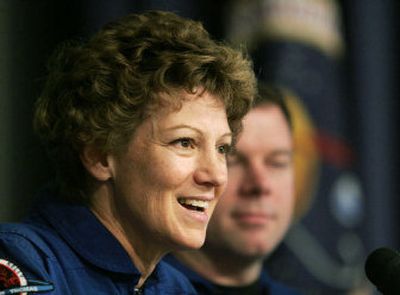Shuttle landing flawless

EDWARDS AIR FORCE BASE, Calif. – Re-entering Earth’s atmosphere for the first time since its sister ship perished in a similar maneuver more than two years ago, the space shuttle Discovery made a flawless pre-dawn landing Tuesday in California, bringing a welcome finale to the space program’s ambitious if nail-biting return to flight.
But as pretty as its touchdown was, Discovery came home with a lot of baggage – new and nagging questions about the fate of the country’s space program.
Would engineers figure out why loose foam insulation peeled off Discovery’s fuel tank, prompting NASA to immediately suspend future shuttle flights? Would this same problem that had doomed Columbia in 2003 – a problem on which NASA spent more than $1 billion and thought it had fixed – now hamper the entire shuttle program? And what impact would that have the viability of the International Space Station, which depends upon the shuttles it for its very existence?
During a post-flight news conference, Discovery commander Eileen Collins said that despite the mission’s problems, the show must go on.
“Some people say we should stop flying because we had an accident,” she said. “But we believe in this mission and I ask you to support us. Space exploration is a fantastic part of the human experience.”
NASA Administrator Mike Griffin downplayed the mission’s problems, saying “we had five pieces of foam come off the tank; that’s the only thing that went wrong with this mission in any imaginably significant way.”
But Griffin, who has ordered that no shuttle mission will fly until engineers figure out how to fix the insulation problem, was noncommittal about the timing of future flights.
Shuttle Atlantis had been scheduled to head into space during a launch window in September, but officials acknowledge that is now unlikely, and that November probably would be the earliest it would lift off.
Detoured from Florida by bad weather, Discovery and its seven-member crew touched down an hour before sunrise, at 5:11 a.m. PDT, following trademark twin sonic booms and stealing through nearly cloudless skies onto Runway 22, a 15,000-foot strip of concrete laid upon a dry lake bed in this desert outpost. “We’re happy to be back,” Collins said moments after touchdown.
At a news conference Tuesday, crew members were ecstatic over their experiences in space and were beaming with pride over their accomplishments – re-stocking the International Space Station; testing and evaluating new safety procedures; and fixing a broken gyroscope that keeps the space station properly positioned.
Collins spoke of the wonders of looking down at a blue-and-white Earth, as well as the dread they had seeing widespread signs of environmental degradation below.
And they spoke repeatedly of how closely they carried the memories of their fallen colleagues with them on the mission, even posting a photo of the astronauts in the flight deck.
“Today is a very bittersweet day for us as we remember the Columbia crew and think of their families,” said Collins. “But they believed in their mission and we are continuing that mission. It’s very important to us that that mission of space exploration goes on, and our hearts go out to their families as we reach a point of closure for them.”